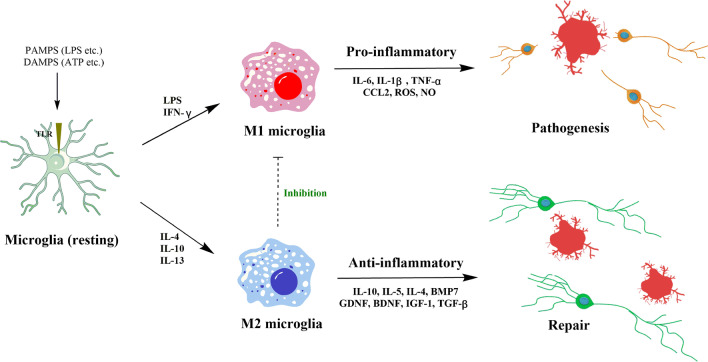Fig. 2.
Microglial M1/M2 polarization and their regulatory functions in the CNS. Resting microglia are stimulated with pathogen-associated molecular patterns (PAMPs) or danger-associated molecular patterns (DAMPs) via toll-like receptors (TLRs). In the presence of lipopolysaccharide (LPS) and interferon-γ (IFN-γ), microglia polarize to the M1 phenotype and produce pro-inflammatory mediators including interleukin-1β (IL-1β), IL-6, tumor necrosis factor-α (TNF-α), CCL2, reactive oxygen species (ROS), and NO. In contrast, IL-4, IL-13, or IL-10 cause alternative activation into M2 microglia that inhibit M1 functions by releasing anti-inflammatory cytokines and neurotrophic factors [40]

